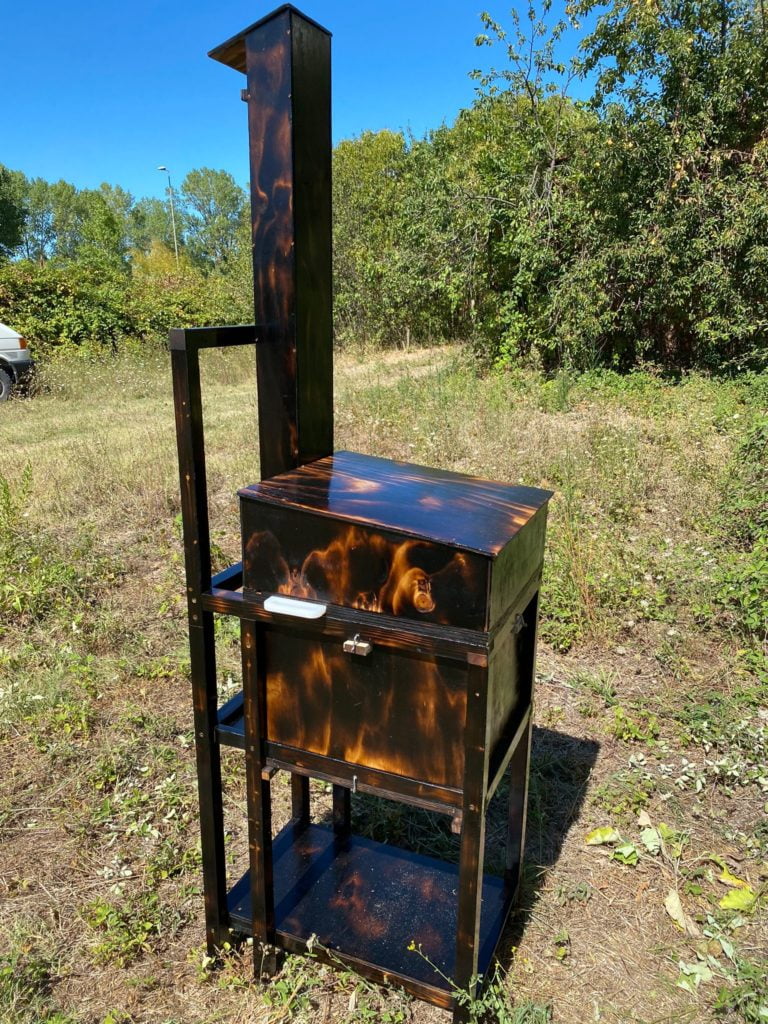The ancient Japanese technique for protecting wood
Varnishing B-BOX is probably one of the first basic operations the new beekeeper has to encounter. This step is essential, as the sun and various weather conditions can damage the wood.
In Japan, a special technique called “Shou sugi ban” is used, which literally means “burnt wooden board”. It is a very old technique, non-toxic but ecological. The aim is to make the wooden surfaces more durable for outdoor exposure, in fact the wood can resist up for many years in this way.
In order to do this, you must:
- Burn the wood with a gas torch until it turns black, so that the pores of it are closed;
- Cool the wood with a jet of water and stop the burning;
- Wipe the surface with a cloth and brush to remove all burning residues;
- Apply a natural oil or a protective clear varnish. The best are oils of natural origin (linseed oil, tung).
This technique was widely used until a few decades ago, but was later supplanted by chemical treatments and resins. In recent years, however, it has made a comeback! It is a natural technique, as the charring process alters the surface of the boards and considerably increases their durability, without changing the internal structure.
The advantage of Shou Sugi Ban is that it improves certain characteristics of the wood with any kind of chemical treatment. In fact, carbonisation decreases humidity and closes the pores of the wood, making the surface resistant to heat, water and humidity, pests and insects and UV rays.
Depending on the type of wood used, planks can last on average 50-80 years without any maintenance. While a periodic oil treatment (every 10-15 years) will extend the life of the plank to 100 years!
The Shou Sugi Ban technique is very simple and cheap to do. You can try to do it at home with the tools presented in this article!
